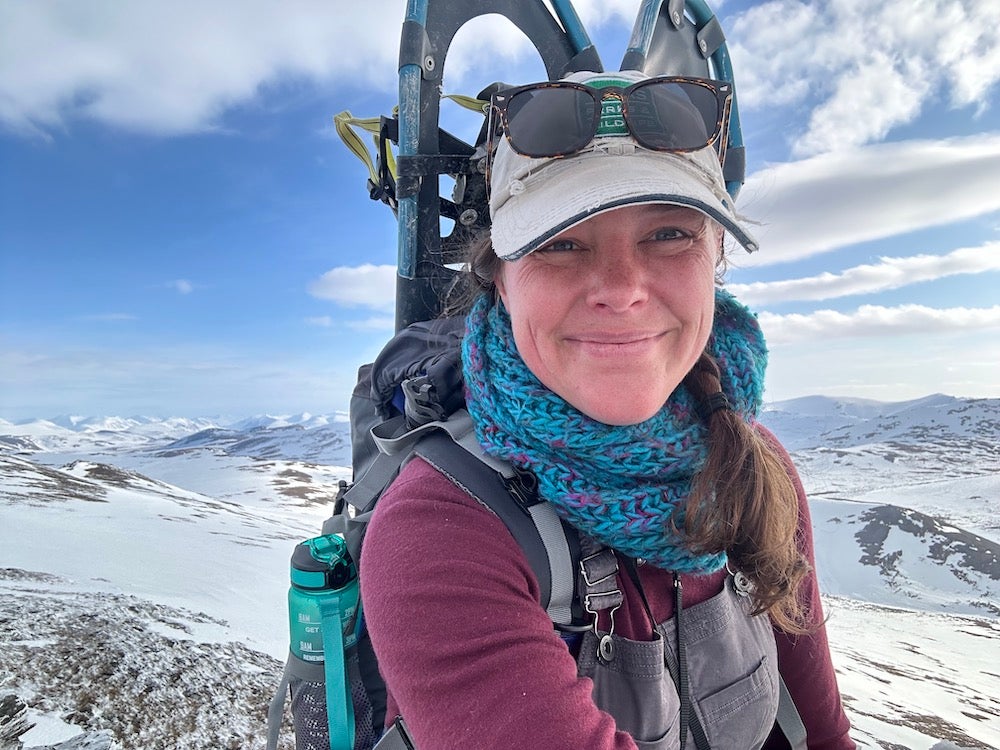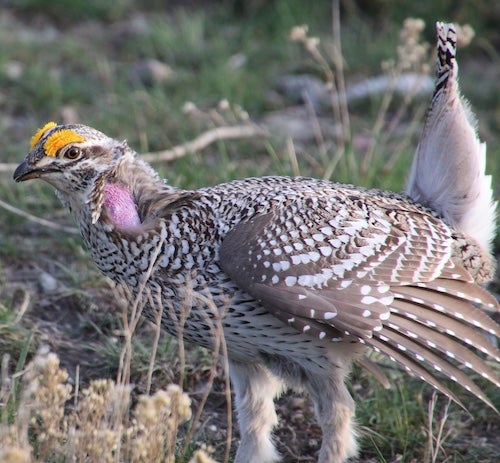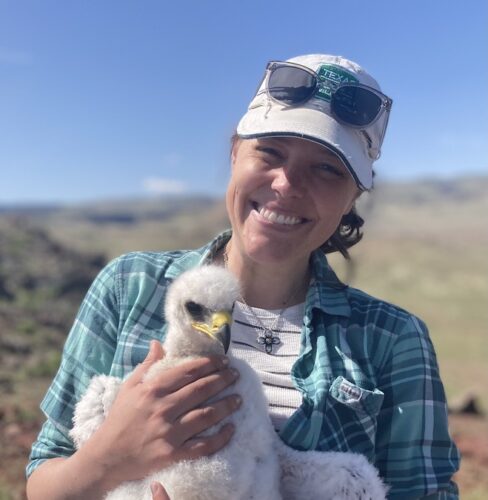
Stephanie Galla, assistant professor in avian biology at Boise State, is on a mission to understand how birds adapt in a changing world. Originally from Illinois, Galla joins Boise State in advancing Idaho’s conservation of Columbian Sharp-tailed Grouse. She is also investigating the genomic diversity of immune genes in gyrfalcons.
According to the Idaho Department of Parks and Recreation, Idaho is home to 409 species of birds, including the largest population of Columbian Sharp-tailed Grouse in the United States. This species, native to Idaho and the Western intermountain area, face significant declines and now only occupy about five percent of its previous habitat.
A long-time admirer of Columbian Sharp-tailed Grouse, Galla is committed to researching the subspecies to support the conservation and management of them in the state. Her team uses genetic tools to examine wing, blood and fecal samples to better understand the population decline. Although not federally threatened or endangered, Galla stresses the importance of studying the grouse before they are.

“It’s important that the public knows about [them] because you cannot protect what you don’t know,” Galla said.
The Raptor Research Center at Boise State, established in 1987, is at the forefront of research on birds of prey and their habitats. Galla’s work at the center utilizes genomic technologies to study gyrfalcons. These Arctic birds benefit from frigid temperatures that suppress disease-carrying insects. However, with climate change causing Arctic temperatures to rise, insects and diseases move closer to the poles, leading to increased avian influenza outbreaks among gyrfalcons. To address this, Galla and her team are working with researchers at long term study sites in Greenland, Iceland and Alaska to understand how gyrfalcons adapt to disease.
Galla believes that genomic research is helpful for making positive changes in our shared ecosystem.
“To learn about these birds and help conserve them for local communities, there are so many tools that we could be using. Genetics is just our tool of choice for understanding the story of these birds, and allows us to ask a little bit of different questions,” she said.
While Galla has ambitious dreams for her research, she especially values the sense of community it fosters.

“We’re at the ground floor, but it’s an exciting place to be because we can dream. If there’s an opportunity to bring these three long-term study sites together, maybe we can create more of a global presence and bring more people to the table. That would be my hope, that it brings people together.”
This publication was made possible by the NSF Idaho EPSCoR Program and by the National Science Foundation under award number OIA-2242769.
- Article written by Zenaida De La Cruz